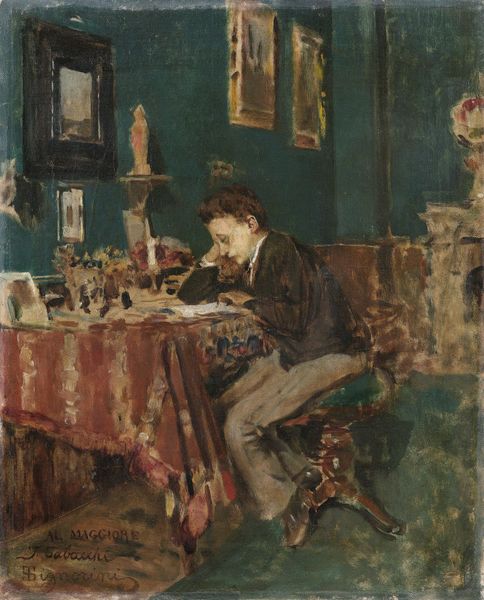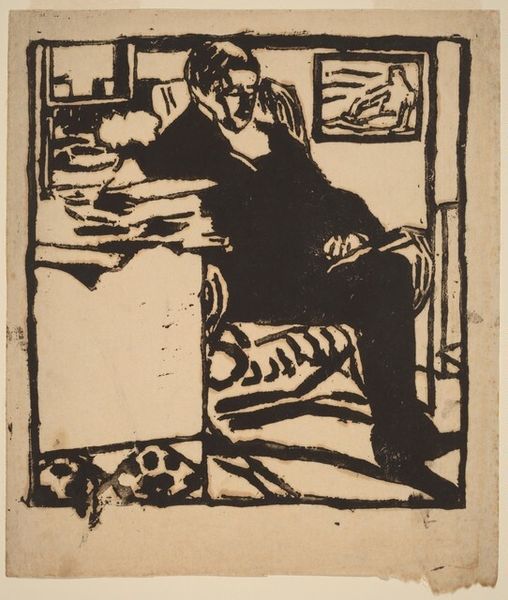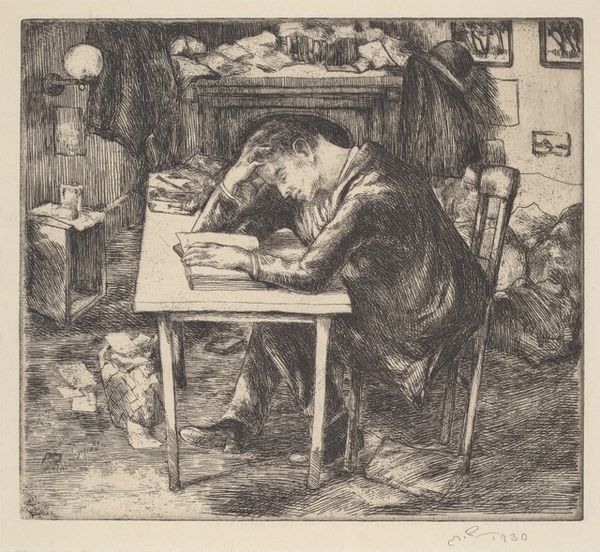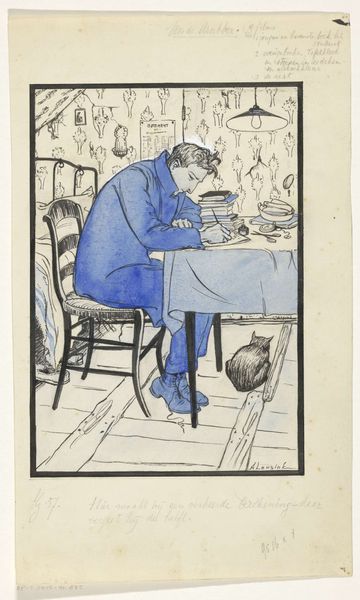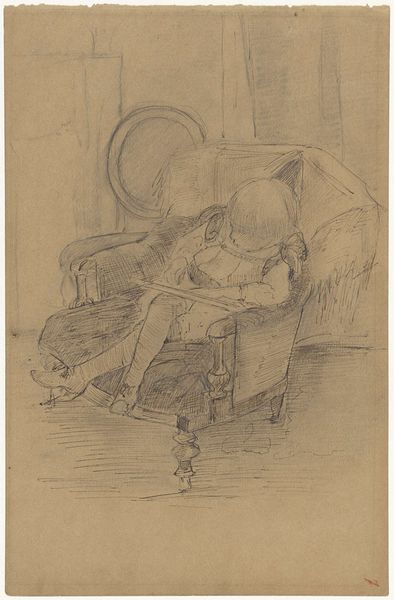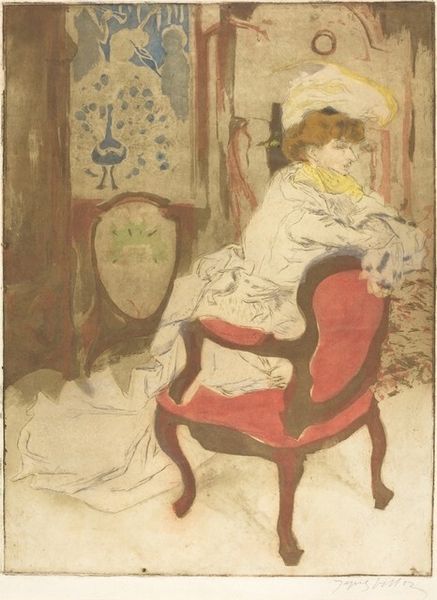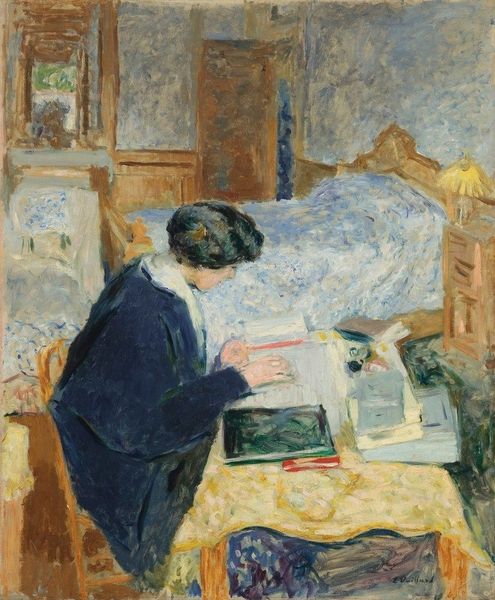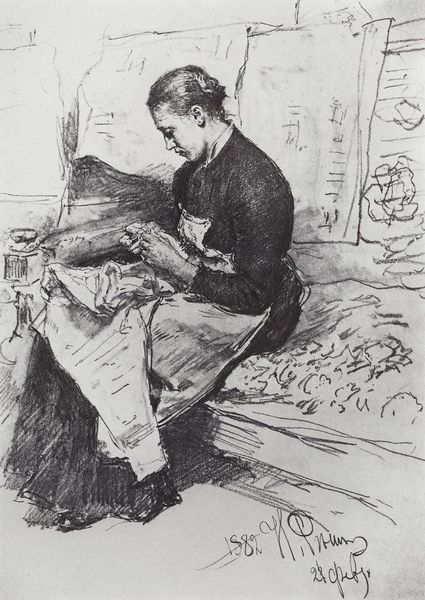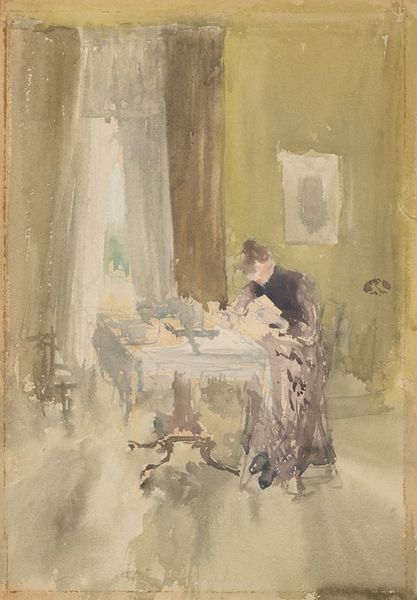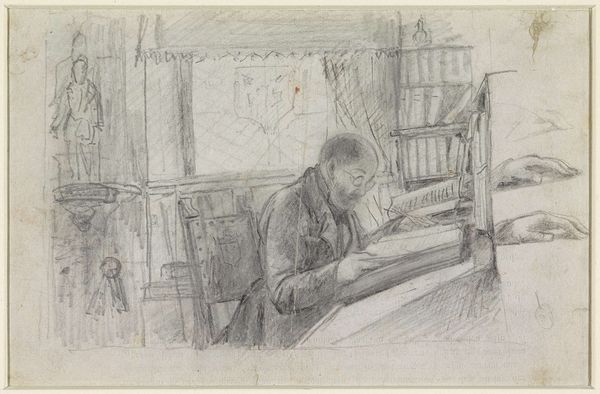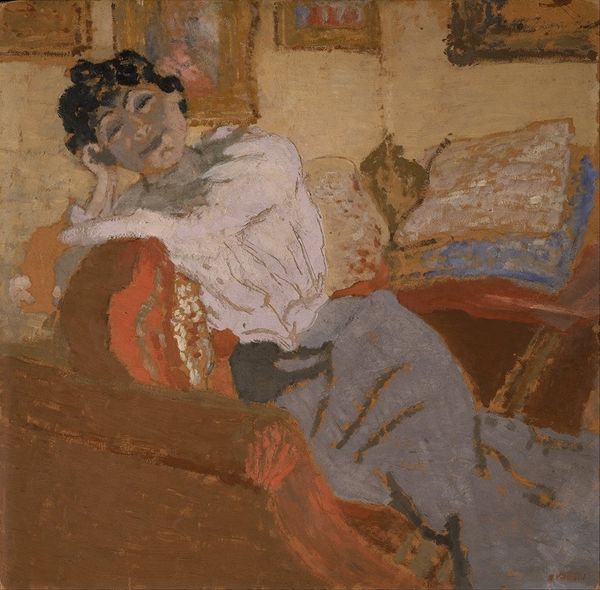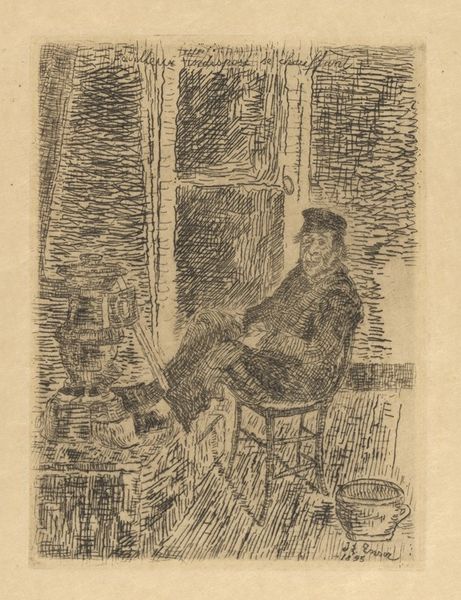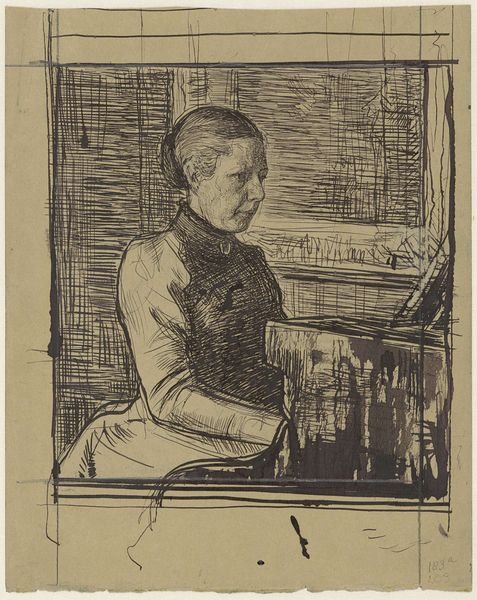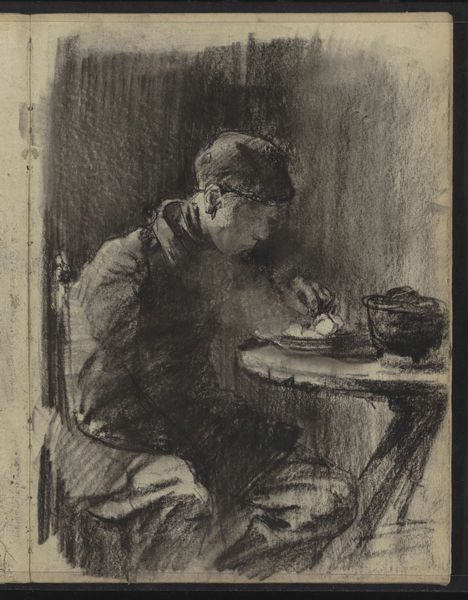
drawing, print, etching
#
portrait
#
drawing
#
self-portrait
#
narrative-art
# print
#
etching
#
cityscape
#
genre-painting
Dimensions: image: 329 x 224 mm sheet: 385 x 266 mm
Copyright: National Gallery of Art: CC0 1.0
Curator: Let’s turn our attention to this “Untitled (Self-Portrait)" etching, dating back to 1935, by Theodore Wahl. What are your initial thoughts on this artwork? Editor: My first impression is of solitude, almost melancholic. The muted colors and the artist’s absorbed posture contribute to this feeling of quiet contemplation, hemmed in by that cityscape outside the window. Curator: Absolutely. Wahl, positioning himself in his studio with that city backdrop, invites us to consider the interplay between the artist's interior life and the external world of urban spaces during the interwar years. The gaze is directed downward. It makes me think about the burden that came with finding new footing in the changing sociopolitical environments of the early twentieth century. Editor: I agree. The choice of etching, with its fine lines and potential for detailed narrative, also feels significant. Printmaking was very politically powerful as well, opening artistic statements to a broader audience at the time. This work seems to deliberately explore not just his own identity but the role of the artist within the evolving cultural landscape, reaching as many people as possible in the process. He’s showing the realities of existing and working as an artist. Curator: Precisely. This etching isn't just a personal reflection; it's a statement on the artist's social and political positioning, exploring the act of creating and the gaze that results from art as political action. His narrative, as depicted through genre painting, reveals complex networks of personal history, societal pressures, and the will for self-expression. Editor: Looking at it from an art market perspective, the affordability of prints in the 1930s democratized art ownership. Wahl's choice of subject matter, showing his daily environment, speaks volumes about making art accessible. Curator: Yes, that accessibility is crucial for understanding the artwork's potential impact on its intended audience, especially with its potential to act as a form of resistance against oppressive systems. The etching process, therefore, amplifies the narrative's ability to instigate conversation and awareness around class, identity, and the struggle of self-representation. Editor: I find myself drawn to the city outside the window—its architectural forms almost mirroring the internal structure of Wahl's introspection. Thank you for expanding my view. Curator: It’s fascinating how artworks from this period continue to spark discussions relevant to our own. Thank you.
Comments
No comments
Be the first to comment and join the conversation on the ultimate creative platform.
